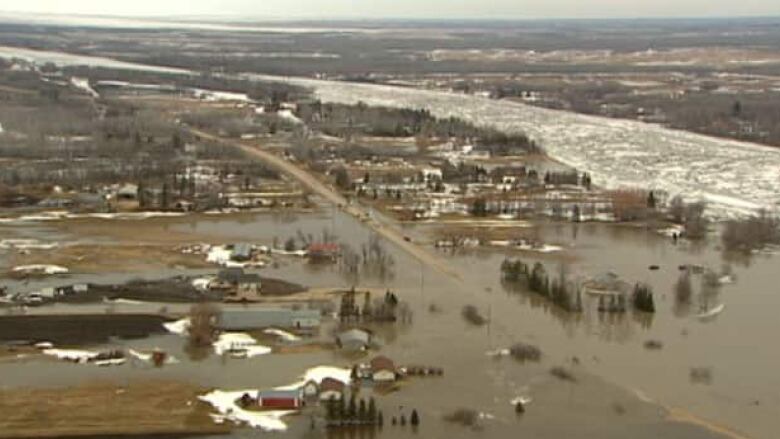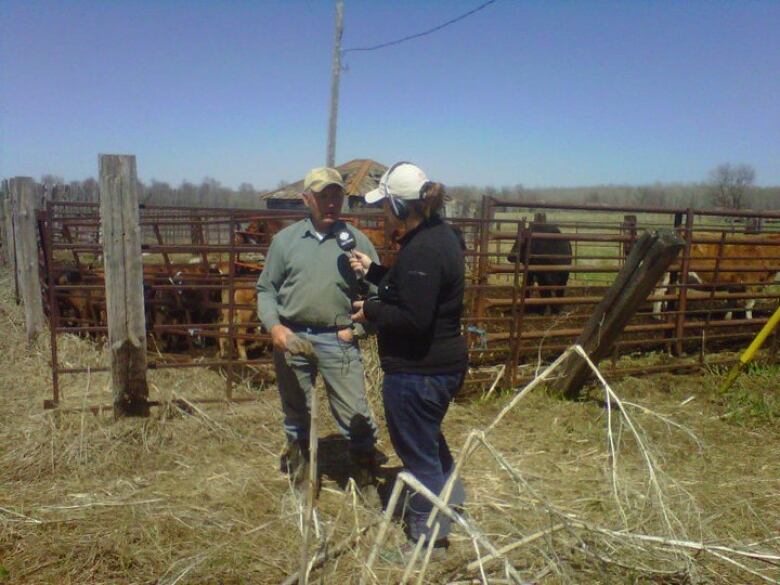5 years later, 2011 Manitoba flood victims still recovering
'It does bring back a lot of emotions': Rancher Arnthor Jonasson remembers devastating flood

This week, CBC's Information Radio, on 89.3 FM,is reconnecting with two families theymet during the 2011 Manitoba flood, to discover how they're doing five years later.
Thinking about the 2011 Manitoba flood isn't easy for Arnthor Jonasson, a cattle rancher who lives in the Vogar area along Lake Manitoba.
"It does bring back a lot of emotions," Jonasson said.
When CBC first met Jonasson in the spring of 2011, he was scrambling to get his cattle to higher ground. He hadn't slept for days and was worried about losing his livelihood.
Five years later, has he recovered from the devastating flood?
"No, not really," he said.
Jonasson, like many others in the years following the flood, has struggled and been forced to make changes. He had to sell a lot of his livestock.
"At the time we were running about 350 cows and we're down to 150 cows now," he said.

The 2011 flood on theAssiniboineRiver was called a one-in-350-year event. Through much of that spring, Lake Manitoba was being fed by floodwaters from the bloatedAssiniboine. Water from the river was channeled north via the Portage Diversion.
As a result, the lake level was pushed to record heights and coupled with a major storm, it spilled into cottages, businesses and across farms in nearby communities.

Jonasson has watched as neighbours sold their properties and moved away.
And he said because of his concerns about making a living in the long run, he hasn't been encouraging his kids to take over the family farm.
But for Jonasson, the biggest impact from the 2011 flood wasn't about money.
"It's not the financial hit that hurt us the most," he said. "It's the community and the emotional hit that hurts the most."
But Jonasson has not thought about leaving Lake Manitoba.
He was born and raised there.

On the west side of Lake Manitoba, near Langruth, CBC met Tom Teichroeb in May, 2011 as he tried to save a pregnant cow that was stuck in the mud.
Looking back to that time, the cattle rancher said it brings back memories they've chosen to forget. The cow would later be euthanized.
Teichroeb said it was an extremely difficult time, being consumed by water while the cows were calving.
"We are very compassionate towards our livestock and the animals that we raise," he said.
Overall Teichroeb said he was fortunate when you look at the overall picture that his losses were minimal when it came to livestock. His cattle operation is a bit bigger now than it was five years ago.
While Teichroeb has recovered and rehabilitated most of his land, he said there are still challenges with areas that have salinity issues.
He said they're not really sure how long it will take before the land gets completely back to normal.
"It took a long, long time for the lake levels to go down and we still haven't dropped, you know, to where we would hope we would have dropped by now," he said.
Teichroeb is chair of the Lake Manitoba Flood Rehabilitation Committee and said there's no doubt that what he experienced during the 2011 flood has had a personal impact on him.
"I think the flood has made me a stronger person," Teichroeb said. "It's opened my eyes in many ways, including the sense of community."












_(720p).jpg)


 OFFICIAL HD MUSIC VIDEO.jpg)
.jpg)



























































































